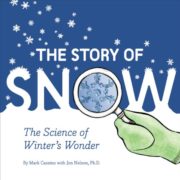Book That Joplin’s History Needs Doesn’t Exist Yet
This is a review of A People’s History of Joplin, Missouri. However, this is less of a book review and more of a nonbook book review — mainly because the A People’s History of Joplin, Missouri doesn’t exist.
At least not that I know of. At least not yet.
This isn’t to say we don’t have numerous wonderful books about the history of our community — we do. Popular contemporary local history book titles include:
- The Best of Joplin (1999)
- Joplin Souvenir Album (2000)
- Joplin Keepsake Album (2001)
- Murwin Mosler’s Gift to Joplin (2005)
- Murwin Mosler’s Joplin in the 1940s (2015)
- Now & Then & Again: Joplin Historic Architecture (2009)
- Postcard History Series: Joplin (2011)
- Images of America: Joplin (2013)
- Joplin Memories: The Early Years (2014)
- Greater Joplin Through Our Eyes (2016)
- Joplin’s Connor Hotel (2021)
- and Tom Connor: Joplin’s Millionaire Zinc King (2021)
Plus, we have titles based on topics one might consider niche, such as criminal histories, mysteries and hauntings. Historic local history book titles include A History of Jasper County, Missouri, and Its People (1912), The Story of Joplin (1948) and Tales About Joplin Short and Tall (1962).
Although this list is not comprehensive, I mention it because these are among the titles I heartily gather for people when they ask for books about local history.
I emphasize “books” because there is so much history in our community that is not published — at least not done so in a tidy format that I can check out to someone when they walk through the library’s doors. When people ask me for books about local Black history, local LGBTQ history or local women’s history, for example, they are disappointed because there’s nothing for me to gather for them to check out.
Part of my role at the library is to help collect and preserve materials that tell the story of our community’s history. Although we have all sorts of local history materials, if one were to look only at books published about our community’s history, as one often does, they might say our collection lacks diversity or representation. In fact, this very thing has been said to me on more than one occasion.
What I’m getting at is that it’s important that a community’s history — its story — be told and represented in voices and from perspectives as diverse and varied as the people who live, or have lived, there. Historically, marginalized voices are often found in nonbook materials, if at all.
From a professional viewpoint, as both a librarian and historian, this is problematic.
Why mention this now? And why here, with a nonbook book review?
Because this is Joplin’s 150th year, our sesquicentennial. Our birthday is later this month, on March 23. Oodles of fantastic celebrations and events are planned for our community, and legacy projects are in the works.
At moments like this, people say we have a rich history. Indeed, we do, but it would serve us well to remember that not all of the richness that makes up the history of who we are as a community has been fully acknowledged, much less written about, preserved or made accessible as part of our legacy.
Does this mean a book titled “A People’s History of Joplin, Missouri” written by the people for the people would be a fix-all? No, but I like it for the title. Do I have the answers to what I and no doubt others see as problematic? Again, no, but I believe that we as a community do, and I’m willing to be a part of the conversation.
As always, happy reading.










